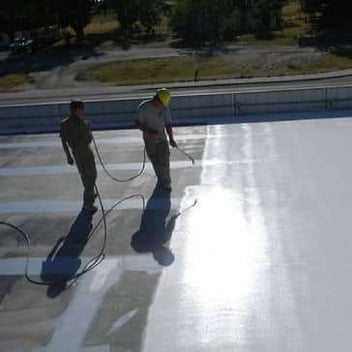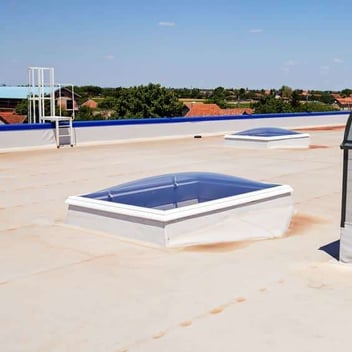- Home »
- Learningcenter »
- How you can contribute to local smart growth
How You Can Contribute to Local Smart Growth

Smart growth is a land development initiative that attempts to combat the “urban sprawl” that’s become prolific in many areas. By focusing on mixed land-use developments and building more affordable residential opportunities near public transportation hubs, smart growth attempts to save natural land and other resources.

This land development strategy relies on architects, city planners, business owners, and landowners to be open to compact neighborhoods and repurposing current structures so they’re more useful. While smart growth initiatives promote growth and change, they also avoid gentrification in focused areas. You can improve your area and contribute to smart growth without changing the atmosphere and essence of the neighborhood itself.
Many initiatives set urban growth boundaries to ensure new construction doesn’t overtake surrounding areas. Smart growth initiatives also focus on beautification to attract new residents and business owners. If you’re interested in becoming involved in smart growth initiatives in your area, review the following information to find out more about volunteering opportunities and other actions you can take to support the cause.
Share Your Building or Land
Mixed land-use is a common strategy for smart growth initiatives. With mixed land-use, one building is used for multiple purposes. A single building may include residential units, retail stores, restaurants, and/or office spaces.
With mixed land-use, residents can live, work, and recreate in one small area, which avoids the need for transportation. It also makes the community more walkable and bustling, which attracts visitors, residents, and business owners alike.
If you own a commercial building, you may be able to implement the mixed land-use concept. You could rent out space to a clothing boutique downstairs and renovate your third story into a loft apartment. When you put businesses and residents under one roof of a commercial building, you eliminate the need for additional construction in an area. To learn if your building is eligible for mixed land-use, contact your city planning department.
Embrace Compact Living and Working Spaces
In many cases, when a community grows, additional houses are constructed next to each other or shopping centers are erected on unoccupied land. However, a compact building grows when the number of stories is increased, not the amount of land utilized.
When developers create compact living and working spaces, they generally choose land that’s already been developed and simply add on to existing buildings. Developers may also secure empty lots or those with additional land near another building to construct compact spaces.
As a business owner or resident, embracing the concept of a compact living and working space will help you reinforce smart growth initiatives in your area. When compact building designs are implemented, land is saved and not as many construction materials are used.
In compact communities, residents find more affordable and convenient housing that doesn’t require as much transportation. Business owners benefit from small offices and retail spaces with lower rent and more foot traffic accessibility.
Contribute to Beautifying Initiatives
There are many ways to beautify your community, including street art, gardening, landscaping, and street lighting improvements. When a community completes beautification projects, it attracts more potential residents and business owners. The more people who live and work within one area, the less need for public transportation and urban sprawl.
If you’re interested in contributing to beautification initiatives in your community, contact your local government office. Most areas already have project leaders and organizations that take on these developments, making it easy to get involved in the next project.
Support Preservation of Natural and Historic Areas
Not only are residents attracted to great places to work and live, but they’re also attracted to communities that are close to beautiful parks and natural areas. To support smart growth initiatives in your community, consider helping with the preservation of natural and historic buildings and areas.
To assist in the rehabilitation of historic buildings, you could contribute to repairs, such as hiring a roofing contractor to install a new roof or painting the building’s exterior. Natural areas should be kept clean and free from pollution, so you could help by joining a volunteer group that picks up trash in these areas or tends to the wild landscape.
Support Diversity
Communities with diverse residents and businesses are the only way for areas to flourish. With smart growth initiatives, communities can offer various types of housing that may be more affordable and attractive for minorities. The location and convenience of this housing also attract a variety of potential residents and business owners, contributing to a neighborhood’s diversity.
If you want to ensure your community is diverse, consider getting involved in smart growth initiatives that rehabilitate properties to make them more liveable and affordable for potential residents. You could help volunteer groups with interior upgrades or landscaping improvements on current residences to encourage new tenants to move in.
Support Senior Citizens
With urban sprawl and large, expensive home construction, many senior citizens find it financially impossible to continue living in their current communities. Rising home prices and inflation make it hard for these senior citizens to afford to remain in their current homes.
Since many smart growth initiatives are focused on creating affordable housing within walkable communities, senior citizens may find these innovative areas beneficial. Mixed land-use and compact living spaces also eliminate the need for public transportation and allow for a better quality of life for senior citizens.
When you get involved with smart growth initiatives in your community, you’re helping senior citizens delay or avoid moving away from the communities they call home. Volunteer groups and local contractors may focus on rehabilitating current residential buildings, including replacing the roof or repairing the siding. These improvements allow residents to enjoy their space without paying out of pocket for costly repairs.
As a business owner or resident, you want to see your community thrive. When you help your community implement smart growth initiatives, you’ll save neighboring land, create a bustling downtown environment, and provide more affordable living and working spaces.
 Call (678) 365-3138
Call (678) 365-3138


